Do you feel overwhelmed when trying to mix metals in the kitchen? Well, if you do, don’t worry—you’re not alone. Mixing different types of metals can seem intimidating and confusing at first. However, it doesn’t have to be a daunting task.
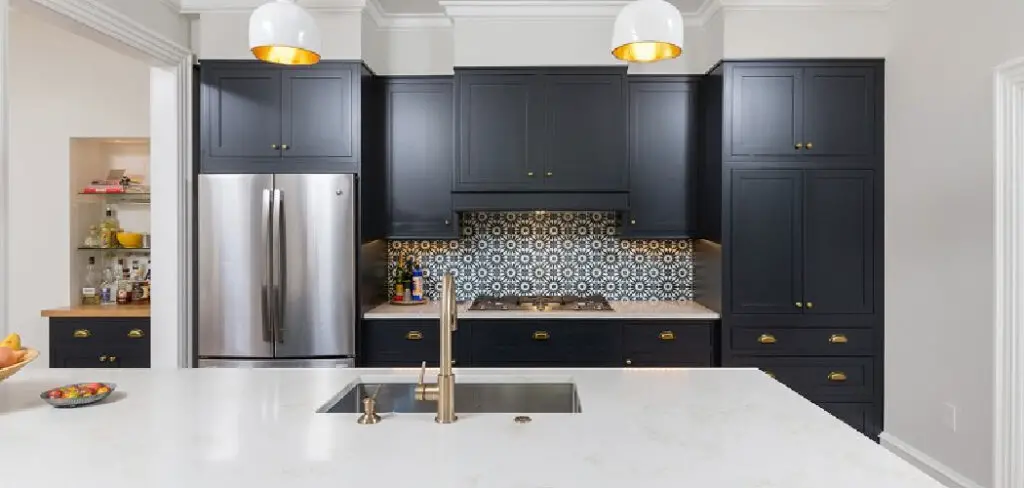
With the right knowledge and tips on hand, you’ll be able to easily choose the perfect combination of metals for your kitchen so that everything looks unified and stylish! In this article, we will provide all the advice you need to learn how to mix metals in kitchen.
Can You Mix Metals in Kitchen?
Adding different metals to your kitchen can be a great way to bring life and vibrancy to the room. Mixing metals in the kitchen, from stainless steel appliances to brass hardware, creates texture and an interesting visual aesthetic. For example, copper cookware on open shelves paired with a pewter backsplash tile look makes for a modern, eye-catching display.
Further, matching metals from the same price range allows you to opt for more quality and stylish pieces without breaking the bank. That said, it’s important not to overdo it – go with no more than two or three metal elements if you want your kitchen to remain cohesive.
Why Should You Mix Metals in The Kitchen?
The kitchen is the heart of the home, and by introducing different metals into its décor, you can create an eye-catching aesthetic. Mixing metals creates an interesting combination that adds depth and texture to any room and helps elevate a space from mundane to magnificent.
Incorporating a range of shades, tones, and textures increases the visual appeal while still creating cohesion throughout the space. Furthermore, mixing metals adds versatility to the design of your kitchen: try adding brass bar stools for seating around a silver table or chrome gadgets next to gold fixtures for a unique twist in the space.
With such diversity in metal colors and shapes available today, many options exist when creating an eclectic yet stylish look with mixed metals in your kitchen.
7 Tips to Follow on How to Mix Metals in Kitchen
1. Mixing Metals 101
Choosing two or three colors that work together is important when mixing metals. Try to stay within the same color family (for example, brass and gold) or colors that contrast each other (like silver and black). Also, try to use similar finishes to have an overall cohesive look.
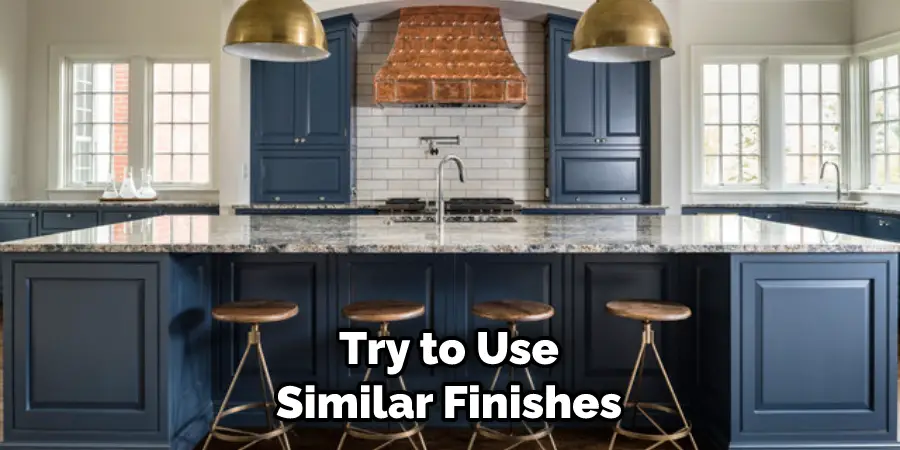
2. Picking the Right Accents
When adding metal accents to your kitchen, try choosing items like light fixtures, the hardware on cabinets, and dinnerware that match the same finish. For example, if you have a brass backsplash tile in the kitchen, choose brass lighting fixtures or drawer pulls for the cabinets.
This will help keep the room from looking cluttered and overwhelming with too many colors of metals. Also, consider adding metallics in unexpected places, such as wall art or shelving accessories. This can add some subtle touches of metal throughout the room without being too busy-looking.
3. Creating Balance
When mixing metals in your kitchen, it’s important to create a balance between all of your elements. For example, try adding large statement pieces (like a light fixture over the island) and smaller accent pieces (like door handles on cabinets).
You also want to be sure not everything matches – mix up finishes for a more interesting approach! Finally, consider adding some natural elements like wood or stone into the mix – this will help bring all of the metallics together without making things look too flashy or overwhelming.
4. Playing with Patterns
While there are a variety of metal colors and finishes to choose from, try playing around with different patterns for a unique look. For example, try adding geometric shapes or lines in your metal accents to add visual interest and texture. You can even mix metals within the same pattern – like alternating gold and silver tiles on the backsplash.
5. Making a Statement with Color
Consider adding some color to the mix if you want to make a bold statement. Try painting your kitchen walls in a bright hue and then adding metallic accents that complement it – as a copper-colored range hood or bronze cabinet pulls. Or, create a statement wall with colorful tiles and mix in some metallics for a unique look.
6. Accenting with Appliances
When it comes to appliances, many are now available in various colors and finishes – from white to stainless steel to black. Choose one or two colors that complement each other and mix up the finishes of the appliances for a modern, sophisticated look.
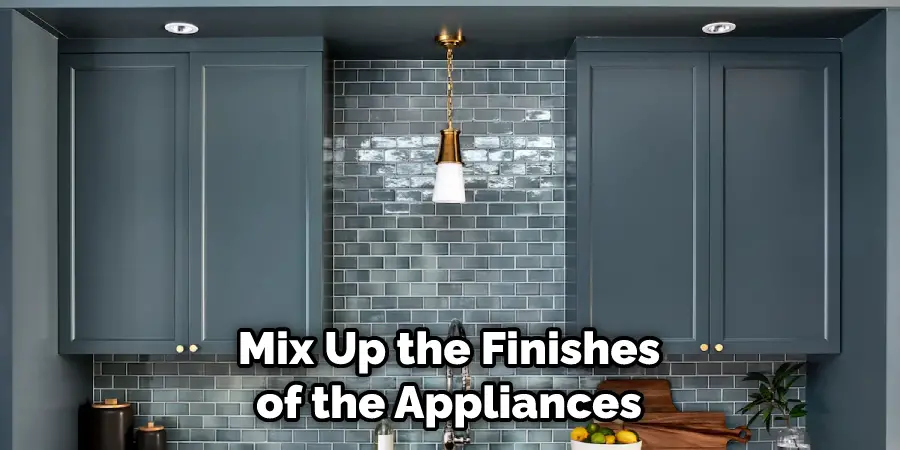
7. Experimenting with Finishes
Finally, when it comes to mixing metals in your kitchen, don’t be afraid to experiment with different finishes. Try adding brushed nickel or matte black accents to mix things up and give the room an updated feel.
Also, consider how finishes can make a difference in how light reflects off of the metal. For example, if you want to add warmth to the room, try adding warmer metals like copper or brass.
That’s it! You’ve now learned how to mix metals in kitchen for a unique and stylish look. With these tips, you can create a beautiful space that is both visually pleasing and functional. So start experimenting now and see how easy it can be to add some metallic flair to your kitchen.
Things You Need to Know Before Mixing Metals in Kitchen
Kitchen décor is one of the biggest trends of the 21st century, with new DIY projects popping up online for everything from cabinet makeovers to stove top backsplashes. However, one way to elevate your kitchen decorations is by mixing metals creatively.
However, before you jump into this project, consider a few things first since mixing metals can make or break a design. Be sure to choose colors that coordinate and complement each other; golds and silvers may work best together, while blues and greens should be avoided.
Additionally, pay attention to any existing furniture or appliances that may need their materials and finishes to match; this will help keep your space looking tidy and cohesive!
Most importantly, ensure all pieces are installed correctly, following proper safety measures. Mixing metals done correctly can create a vibrant aesthetic that really adds some life and texture to your kitchen!
5 Benefits of Mixing Metals in a Kitchen
1. Adds Visual Interest
One of the primary benefits of mixing metals in a kitchen is that it can add visual interest to the space. Different metals can create a unique and stylish look that will make your kitchen stand out from the rest. Additionally, mixing metals can also help to create a more eclectic and unique aesthetic.
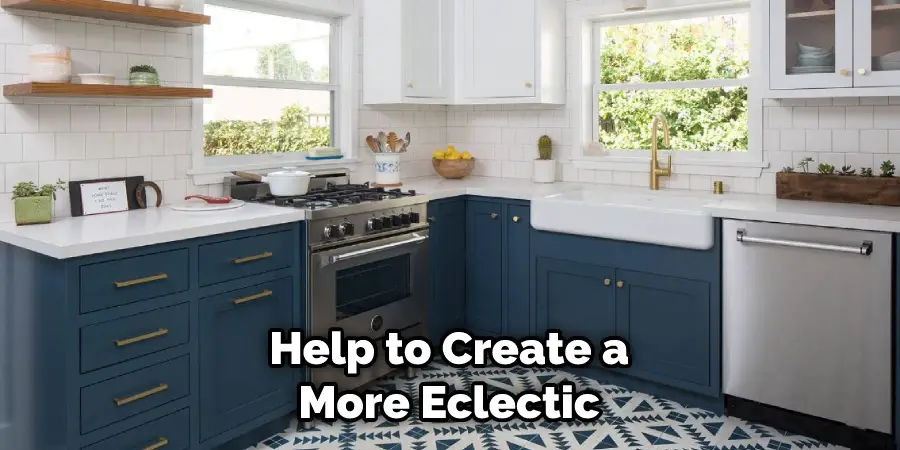
2. Creates a More Customized Look
Another benefit of mixing metals in a kitchen is that it allows you to create a more customized look. When you mix different metals, you can choose finishes and hardware that best suit your personal style and taste. This way, you can create a unique kitchen that reflects your own individual taste.
3. Allows for More Flexibility
Mixing metals in a kitchen also allows for more flexibility in design. If you ever get tired of the way your kitchen looks, you can simply change out a few pieces of hardware or fixtures to give the space a new look. This is much easier than completely remodeling your kitchen if you want to change the overall look and feel.
4. Helps to Tie the Room Together
Another benefit of mixing metals in a kitchen is that it can help to tie the room together. If you have multiple metal finishes in your kitchen, it can help to create a cohesive look. This is especially helpful if you have an open floor plan and want to ensure that your kitchen flows well with the rest of your home.
5. Increases the Value of Your Home
Finally, mixing metals in a kitchen can also increase the value of your home. If you ever decide to sell your home, potential buyers will be impressed by the fact that you took the time and effort to mix different metals in your kitchen. This will show them that you paid attention to detail and created a stylish and unique space
The Best Time to Mixing Metals in Kitchen
The best time to mix metals in the kitchen is when you want to create a chic and stylish look. By combining different metals, such as brass, silver, and gold, you can add eye-catching detail to your decor.
From cabinet pulls and lighting fixtures to curtain rods and stove knobs, mixing up the finishes on hardware will add a layer of sophistication that stands out from the crowd.
Think of it as jewelry for your kitchen! But be sure not to overdo it; too many mixed metals can have an overwhelming effect that detracts from rather than enhances the look. Instead, keep it subtle and tasteful for an inspiring blend of modernity and classic charm.
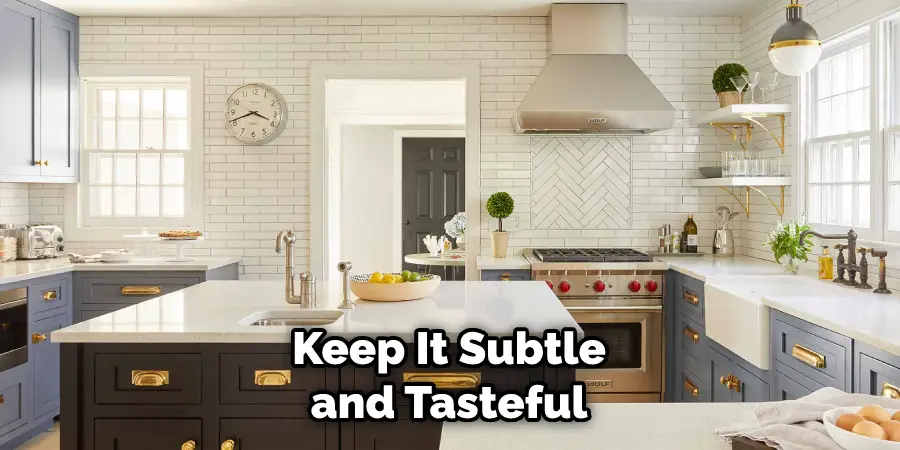
6 Common Mistakes People Make When Trying to Mixing Metals in Kitchen
1. Not Considering the Overall Aesthetic.
When mixing metals in the kitchen, it is important to consider the space’s overall aesthetic. This means considering the colors of the walls, the flooring, and the other finishes in the room. Creating a cohesive look will make your kitchen look more put-together and stylish.
2. Not Using a Consistent Finish.
Another common mistake people make when mixing metals is not using a consistent finish. This can create a jarring look that is not pleasing to the eye. When mixing metals, be sure to use finishes that are in the same family, such as brushed nickel or oil-rubbed bronze.
3. Not Mixing Different Textures.
In addition to using different finishes, it is also important to mix different textures when mixing metals. This can add visual interest and depth to your kitchen. For example, try pairing a smooth metal with a textured one, such as stainless steel with copper or brass.
4. Not Mixing Different Shapes.
Another way to add interest when mixing metals is to mix different shapes. This can be done using different hardware types or by incorporating metal accents into your kitchen design. For example, you could use square cabinet knobs with round ones or pair a metal backsplash with a metal range hood.
5. Not Mixing Different Sizes.
When mixing metals, it is also important to mix different sizes. This will help to create a more balanced look and prevent your kitchen from looking too “matchy-matchy.” For example, try using small hardware on some cabinets and larger hardware on others or incorporating metal elements of different sizes into your design.
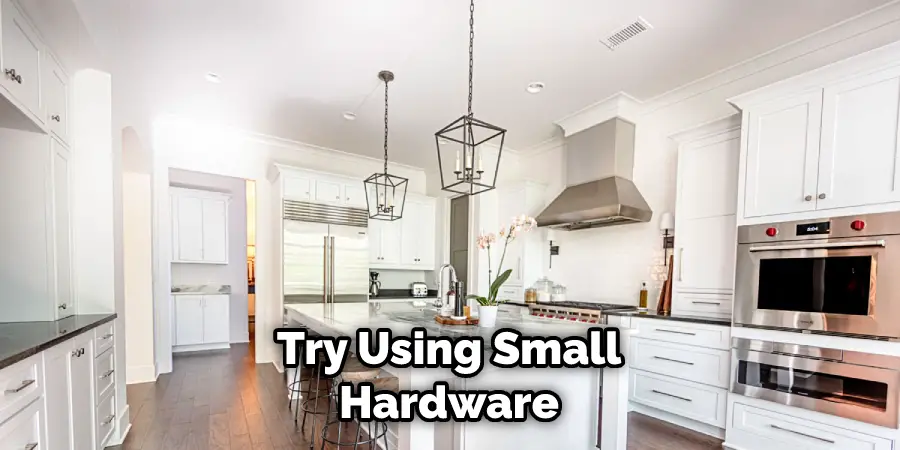
Conclusion
Adding metallic accents to your kitchen is easy to add personality and style without renovating. When mixing different metals together for a modern look, be sure to pick colors that work together and use similar finishes for a cohesive feel throughout your space.
Add small accent pieces and larger items like light fixtures, and don’t forget about incorporating natural elements like wood or stone into your design scheme! With these tips in mind, you can easily create a beautiful metal mix in your kitchen that will make it stand out from the rest! Thanks for reading our post about how to mix metals in kitchen.
Professional Focus
Angela Ervin, a former interior designer turned blogger, specializes in kitchen design and renovations. Through her website, she blends her passion for cooking with design expertise, sharing practical and creative ideas. Known for balancing functionality and beauty, Angela’s insightful content has made her a trusted voice in home design and lifestyle.
About the Author
Angela Ervin, an experienced interior designer and blogger, combines her passion for kitchen renovations with storytelling. Living in Petersburg with her family, she enjoys cooking and testing her projects firsthand. Known for her humor and relatable style, Angela shares creative, functional design insights through her content, making her a trusted voice in home design.
Education History
University: Virginia Commonwealth University
Degree: Bachelor of Fine Arts (BFA) in Interior Design
- Angela’s education at VCU focused on mastering core interior design principles, including spatial planning, color theory, materials selection, and sustainable design practices.
- She gained hands-on experience through studio projects and collaborative design exercises, which honed her ability to create functional and aesthetically pleasing environments.
- Her coursework also emphasized problem-solving and practical applications of design, preparing her for real-world projects like her self-directed kitchen renovations.
- The program’s strong foundation in both technical skills and creative expression shaped Angela’s ability to seamlessly integrate form and function in her work.


